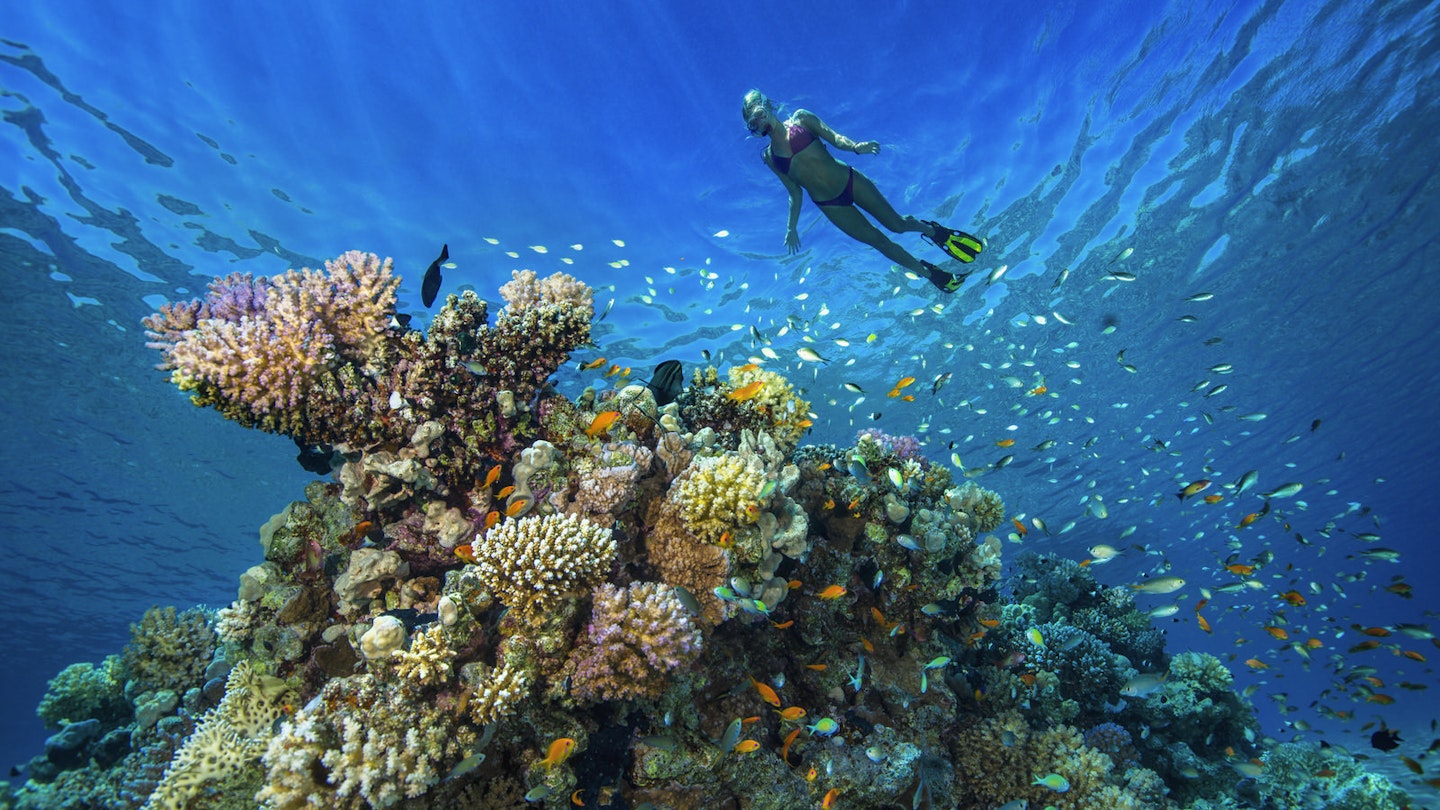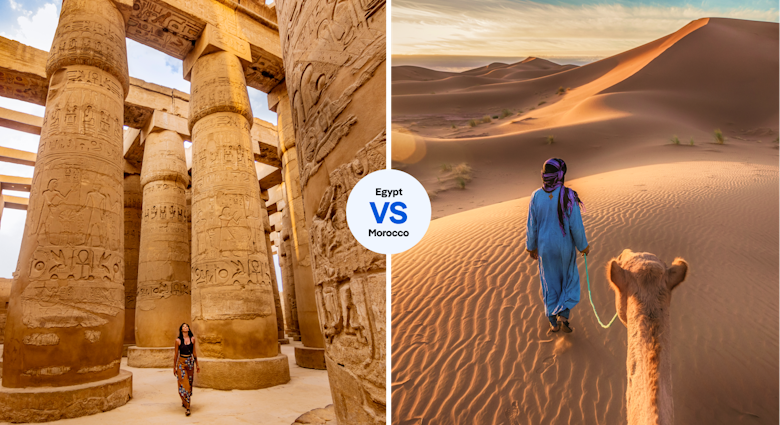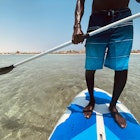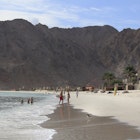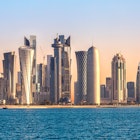With a dazzling bounty of underwater attractions to explore and improved access to key diving hubs, there has arguably never been a better time to strap on a dive tank in the waters of the Middle East. From revived favourites to up-and-coming diving destinations, here are the region’s scuba highlights.
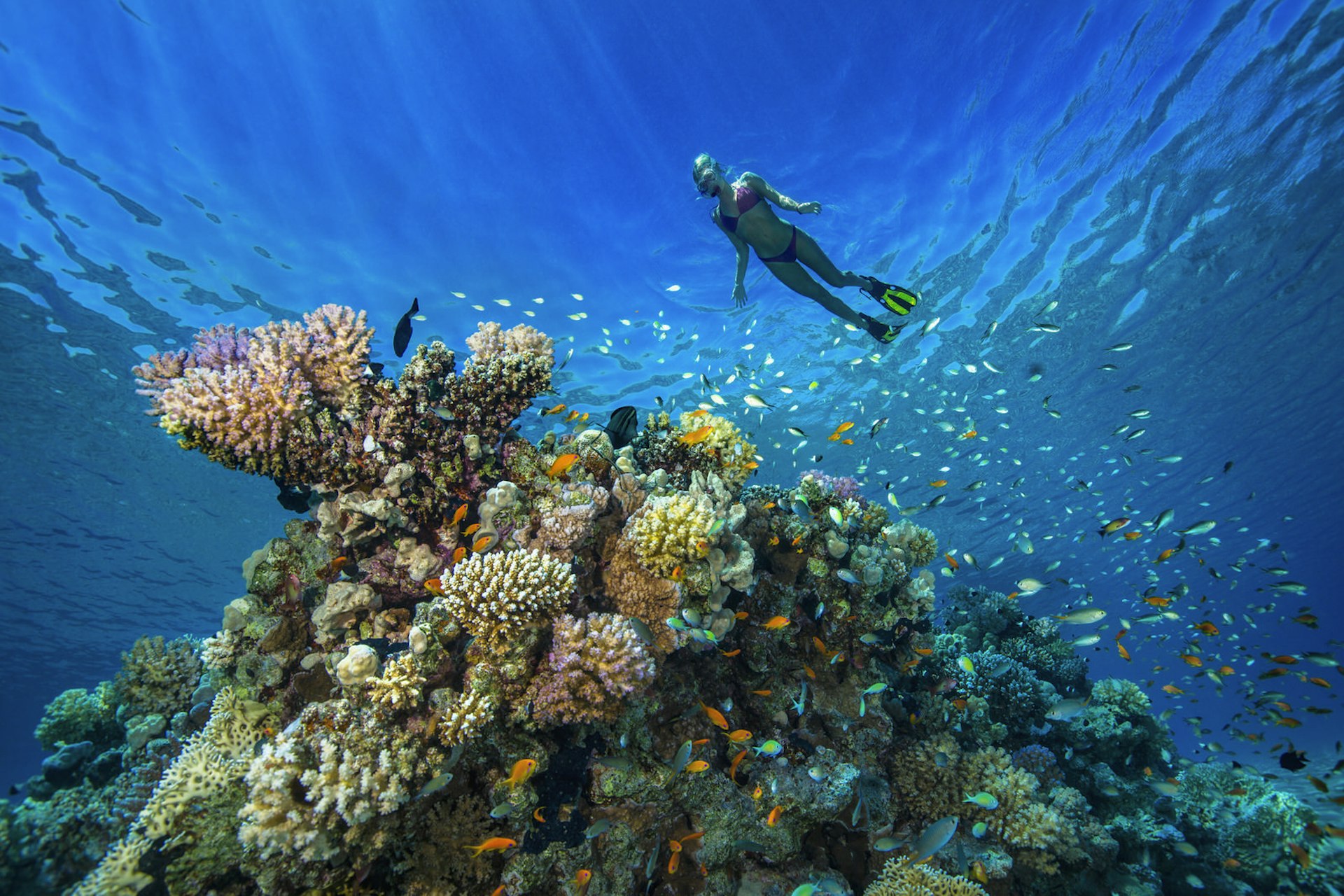
Red Sea
Known for its incredible biodiversity, excellent visibility – averaging 30m or more – and the resilience of its coral in the face of rising sea temperatures, the Red Sea is the Middle East’s most popular diving destination for good reason. With tourism still recovering in Egypt’s South Sinai diving hubs (amid calls for the UK to resume direct flights to Sharm El Sheikh), it’s a great time to avoid the crowds in bigger resorts like Sharm, which offers the best access to the Thistlegorm, a sunken WWII freighter considered one of world’s most famous wreck dives, and Ras Mohammed National Park, with its superb wall diving (Camel Dive Club services both sites).
Known for its Blue Hole, the more bohemian dive town of Dahab, 100km north of Sharm, is also making a comeback (check in with Red Sea Relax Dive Centre). However, many divers say Egypt’s best diving is found off the mainland resort of Marsa Alam, the launch point for trips to Elphinstone Reef, where advanced divers may spot oceanic white tip and hammerhead sharks; go underwater with Red Sea Diving Safari, one of the region's leading operators.

While you won’t spot too many pelagics at the northern end of the Red Sea, the reefs off Eilat, Israel, and Aqaba, Jordan, are showing solid signs of recovery following increased protection measures by both countries in recent years (including the replanting of corals on damaged reefs off Aqaba). While Eilat has a couple of wrecks (which Aqua Sport International runs dives to), the best are found off Aqaba, particularly the Cedar Pride, a Lebanese freighter that was deliberately sunk as an artificial reef at the request of King Abdullah II – a champion of Jordan’s scuba diving industry – in 1985. Dive Aqaba is among the city’s most reputable dive outfits.
Arguably the hottest Red Sea diving destination right now, however, is Saudi Arabia. The diving possibilities off the nation’s largely uncharted western coastline are becoming more accessible than ever (conveniently, there aren’t currently any restrictions on men and women diving together either). Tourist visas to Saudi Arabia are still in the works but are promised to come soon after a trial run at the end of 2018, and visitors will find a number of established dive clubs in the resorts of Jeddah and Yanbu, with top dive sites including the Boiler Wreck off Jeddah with its huge fan corals and manta rays (try Desert Sea Divers), and the Seven Sisters, a hammerhead shark habitat off Yanbu that's best visited on a liveaboard with Dream Diver.
When to go
Diving is possible year-round, though oceanic whitetips are best visible from October to January, while hammerheads make an appearance from June to September. May to July is whale shark season.

The Gulf
Ongoing coastal development, a lack of coral and the byproducts of oil extraction in the GCC states doesn’t make for the world’s best diving, but there are several wrecks in the region that shouldn’t be overlooked. Among the plethora of wrecks outside Dubai’s harbour, most divers count the Zaineb, the MV Ludwig the MV Dara – a passenger ship that became the world’s second worst maritime disaster after the Titanic following an explosion that sank it in 1961 – among the best. Check them out with Al Boom Diving.
Off the south coast of Iran, Kish Island is one of the region’s more up-and-coming diving destinations, with worthwhile sites including Southern Crack, a coral rift swarming with moray eels, and Sambaron for its colourful corals. Long-standing Kish Diving Centre can take you there, though men and women currently must dive separately. On the plus side, a visa isn’t required for divers visiting this free trade zone area from Dubai.
When to go
Diving is possible year-round, but for the best comfort and visibility above and below the surface, experts recommend avoiding the peak summer and winter months.
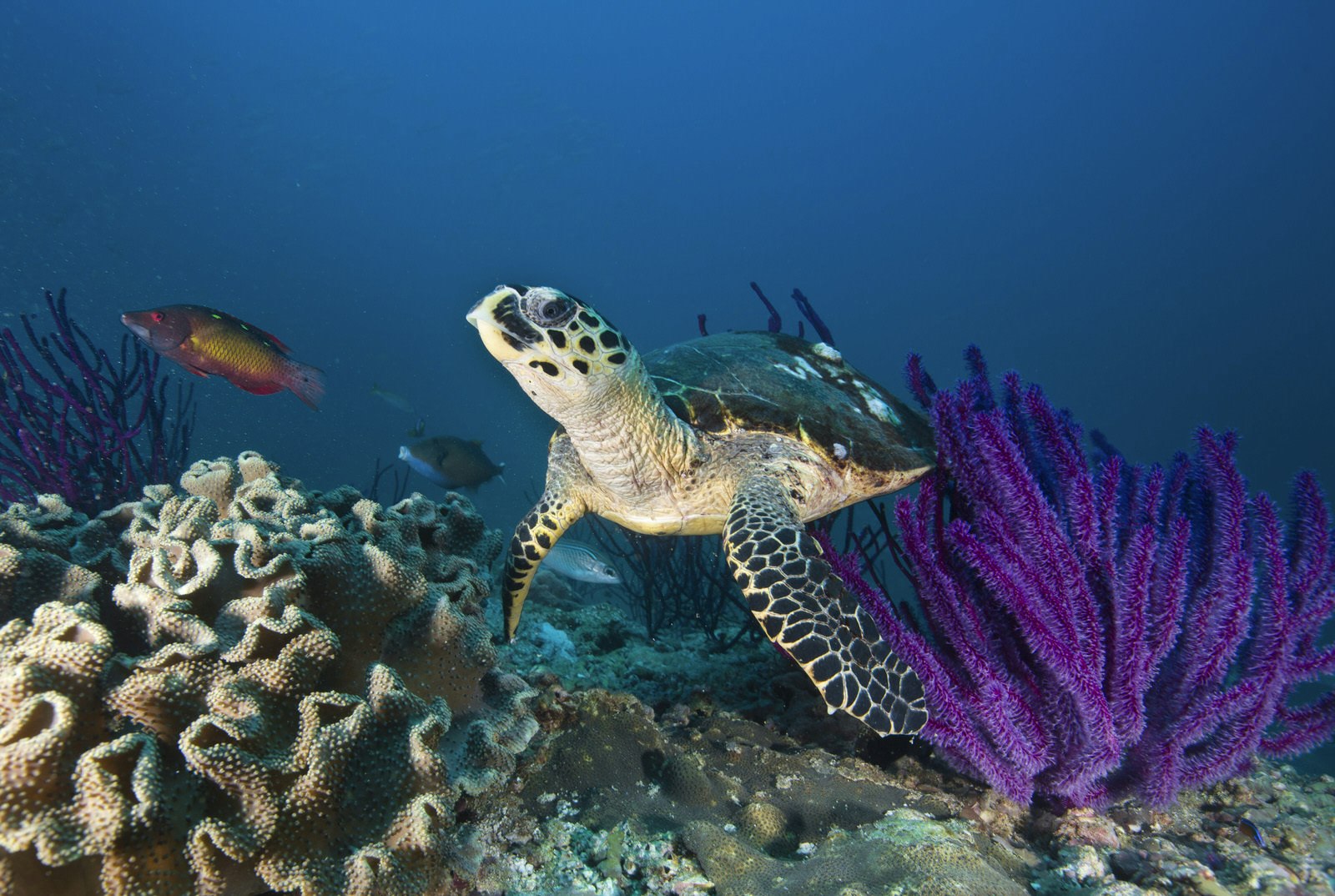
Gulf of Oman and Arabian Sea
The only emirate with a coastline solely on the Gulf of Oman, Fujairah boasts more marine life at its dive sites than those of the Gulf (Al Boom has a dive centre in Al Aqah), and after announcing plans in 2018 to build the world’s largest artificial reef off the coast, it looks set to become one of the most exciting diving destinations in the region.
While it’s possible to dive off a traditional dhow in the nutrient-rich waters of Oman's enclave of Musandam (book with Al Marsa in Dibba), Muscat is the Gulf ’s most popular diving hub. An important nesting area for hawksbill turtles, the Daymaniyat Islands off Muscat are a crowd favourite. Also accessible from the capital is Al Fahal Island, popular for its mobular rays and black-tipped reef sharks, and the 84m-long Al Munassir wreck sunk in 2003 by Oman’s navy in Bandar Khayran, which attracts colourful nudibranchs, a type of shell-less sea slug.
Further south, the Arabian Sea coastal town of Mirbat is one of the few places in the world where both coral and kelp gardens can be observed (during the summer months at least). The area is most famous, however, for the 22 species of dolphins and whales that call it home – between January to April, there’s even a chance of sharing your dive with an orca. Extra Divers has dive shops in Muscat and Mirbat. The nearby Hallaniyat Islands are also a hotspot for whale encounters and are best reached by liveaboard (try Dive Worldwide).
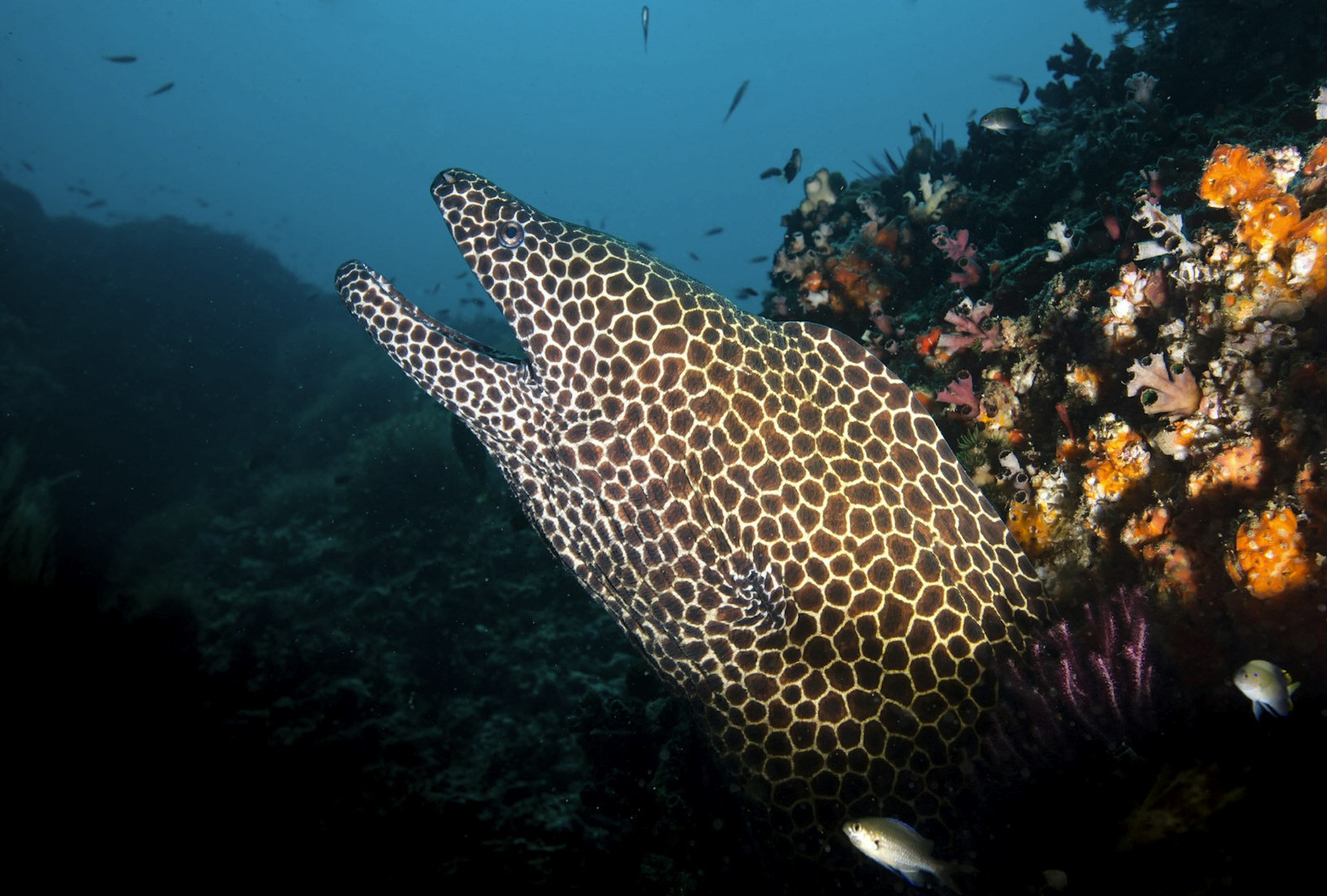
When to go
Diving is possible year-round except in the south, where the monsoon season (locally called the khareef) prompts most dive centres to close from around June to September. April to May and September to October are said to offer the best combination of surface and sea temperatures for diving in the north, with May better for visibility and September to November the best months for whale shark encounters.
Sarah Reid travelled to Oman with support from Shangri-La Barr Al Jissah Resort & Spa and Extra Divers Qantab. Lonely Planet writers do not accept freebies in return for positive coverage.
https://shop.lonelyplanet.com/products/middle-east-travel-guide-9

